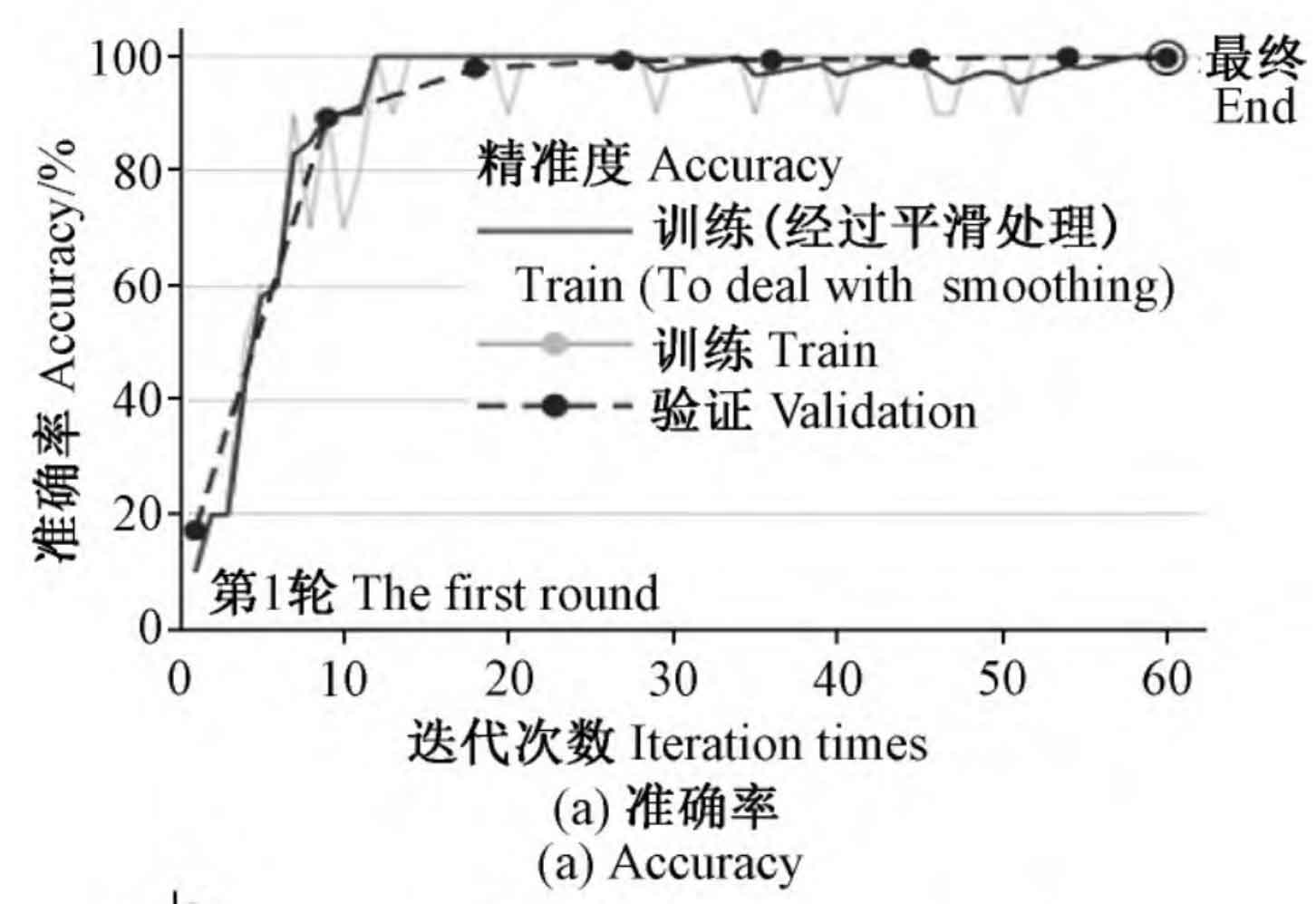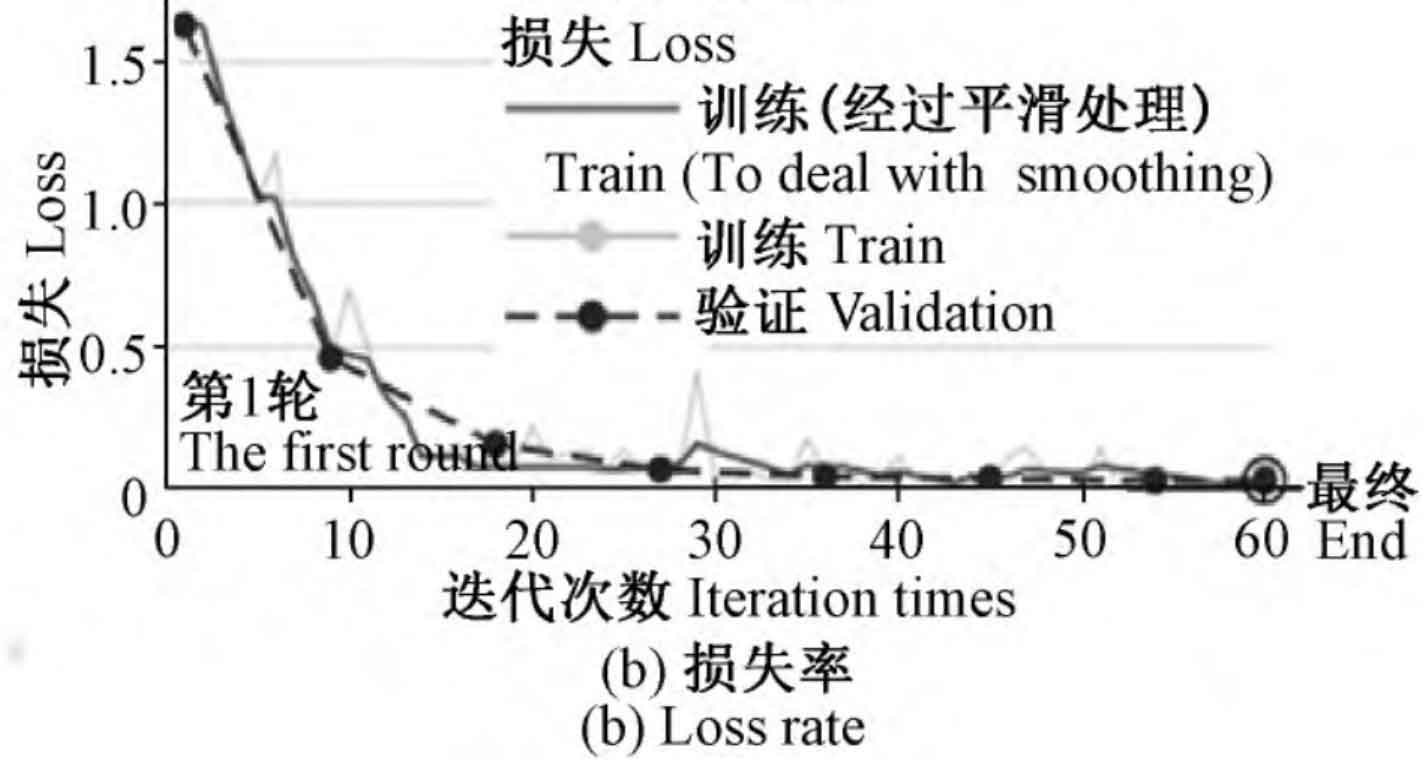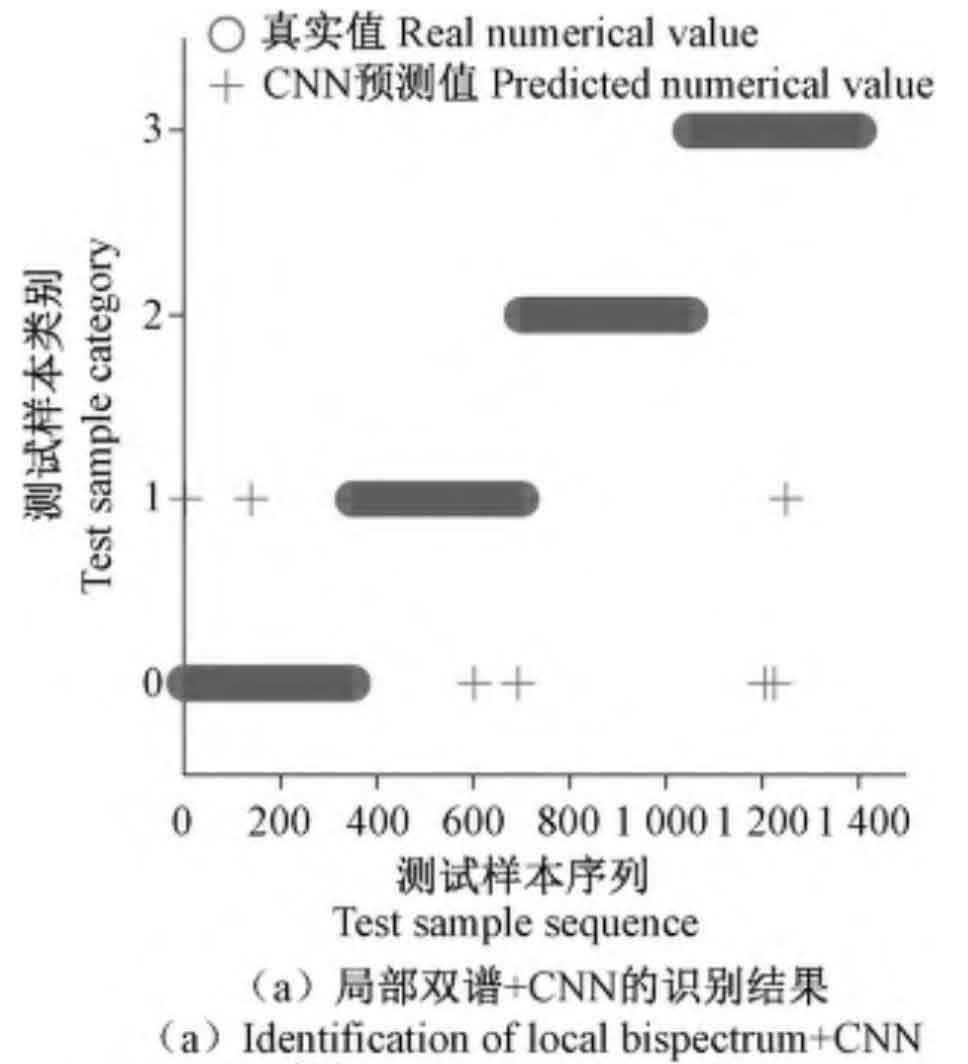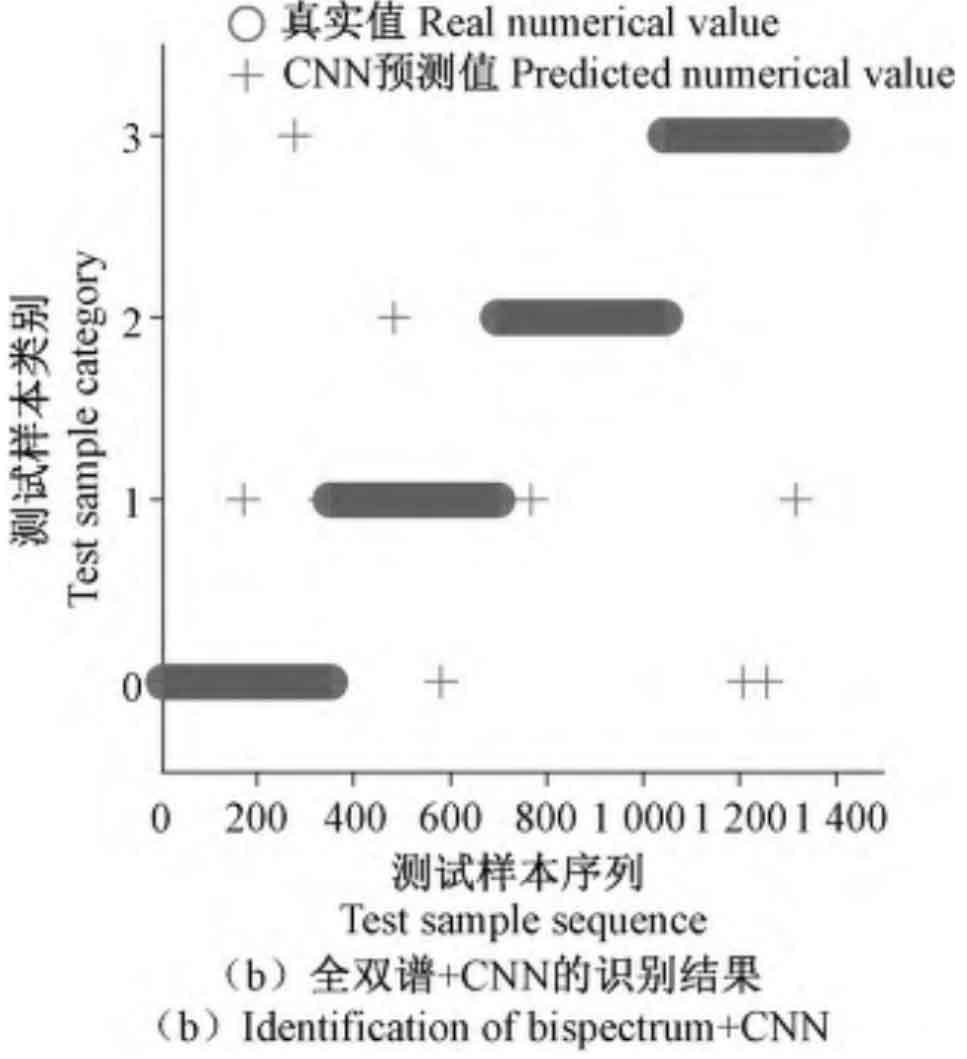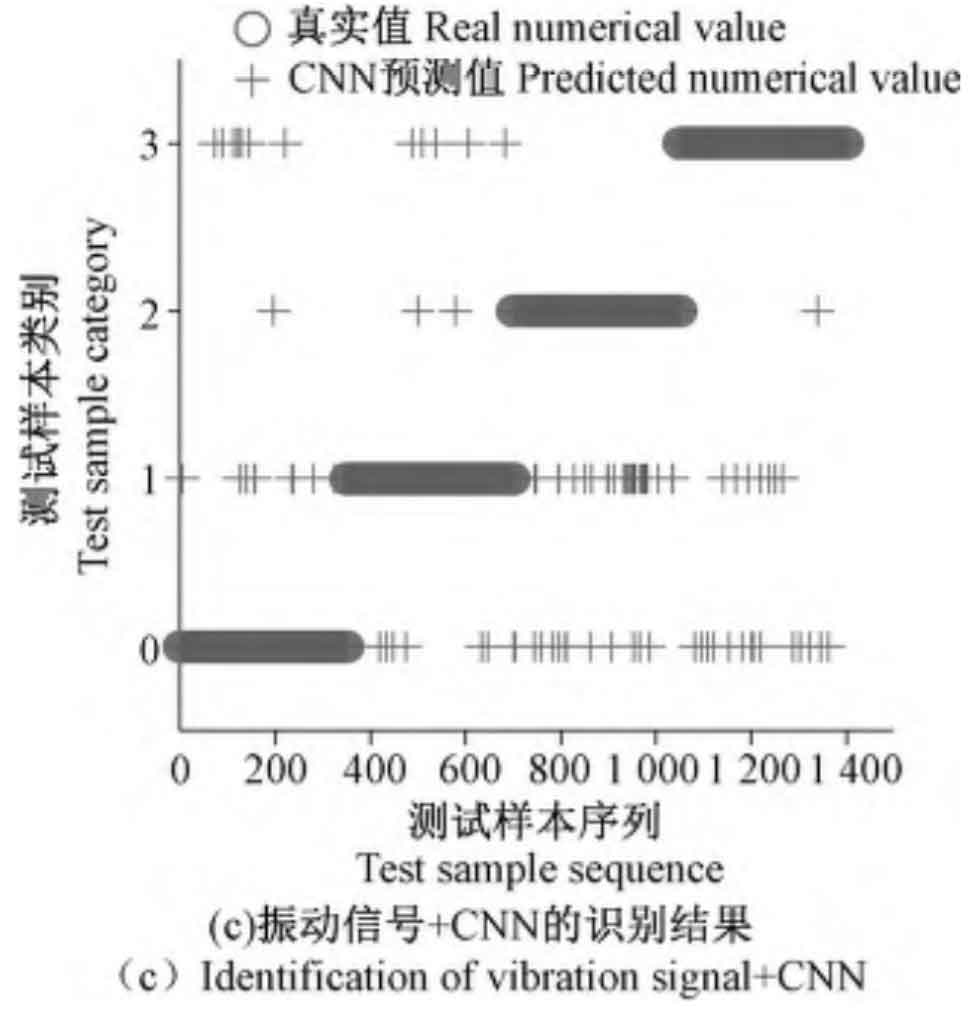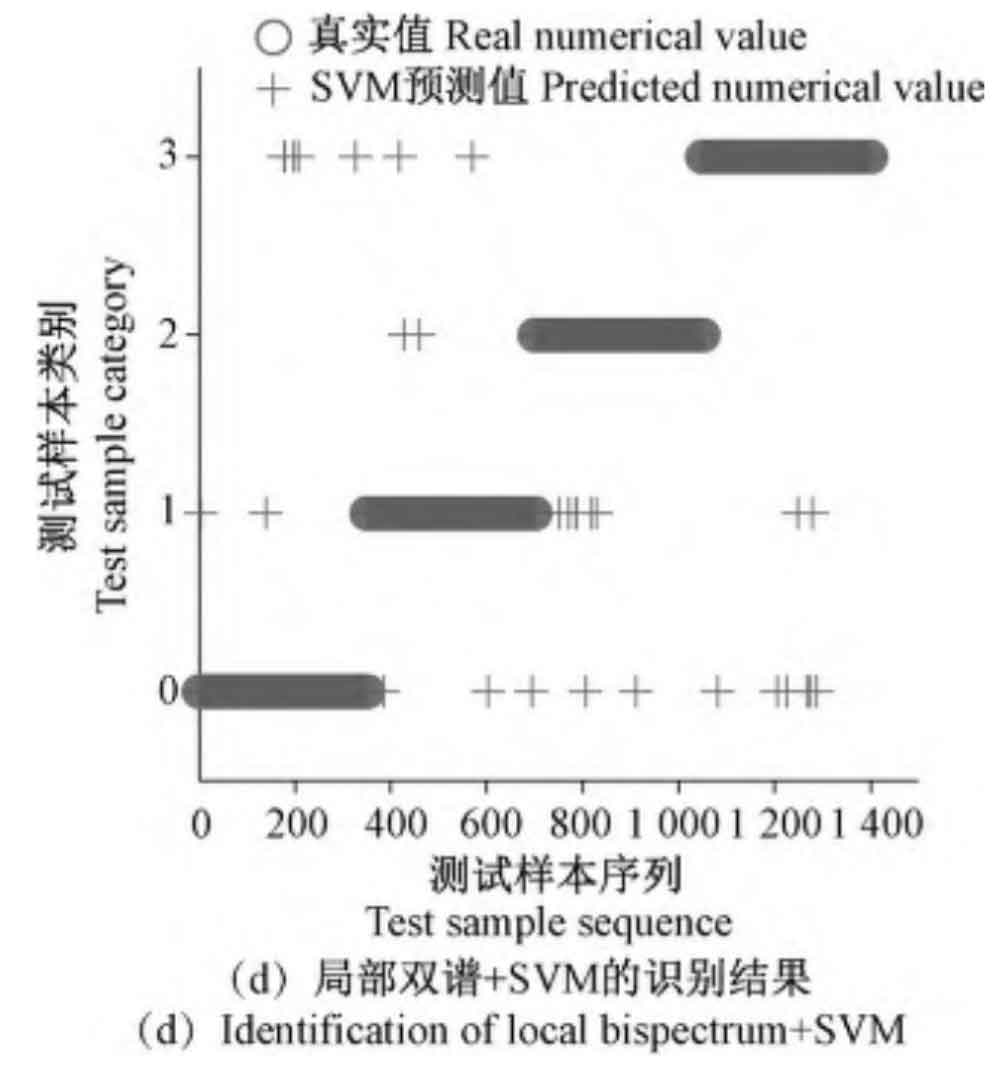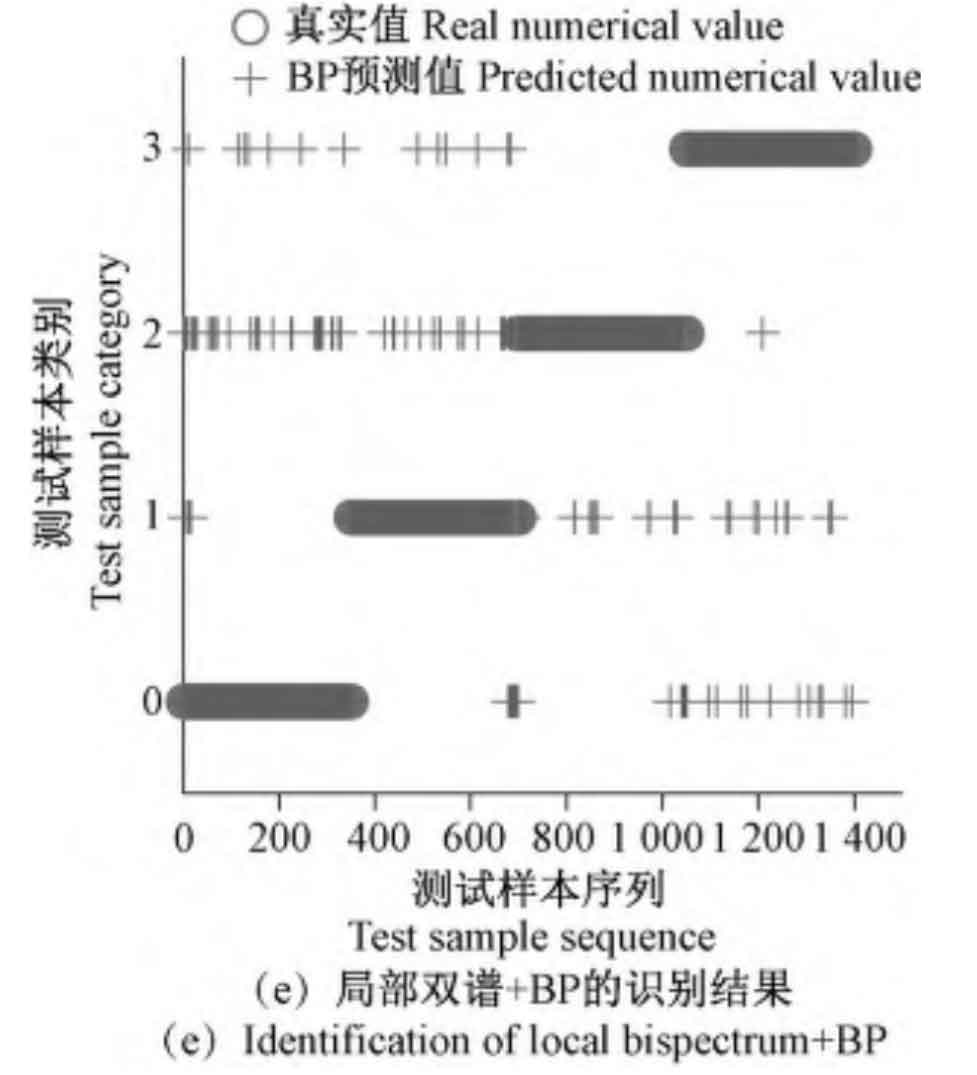150 groups (600 groups in total) are randomly selected from the four local bispectral samples of spiral bevel gears under operating conditions to form training samples, and the remaining 350 groups (1400 groups in total) of samples under each fault condition form test samples. Input the training samples into the CNN model for training, and the accuracy and loss rate curve of the model training is shown in Figure 1. As can be seen from Figure 1, as the number of iterations increases, the accuracy of model diagnosis increases, and the error decreases and approaches zero. When the maximum number of iterations reaches 60, the accuracy of CNN model diagnosis is 99 50%。
In order to further verify the advantages and effectiveness of the method proposed in this paper, the diagnostic results of local bispectrum+SVM, local bispectrum+BP neural network, original vibration signal+CNN and full bispectrum+CNN are also selected for comparison. RBF kernel function 275-282 is used for SVM, and the parameters are selected by cross validation method [21] as follows: δ = 3, penalty factor C=4; The number of implicit nodes of BP neural network is 32, and the node activation function is ReLU.
The dimension of the original vibration sample is one dimension. The diagnosis results of spiral bevel gear faults by the above five different methods are shown in Figure 2, where “○” represents the actual category of samples and “+” represents the sample sequence predicted by the model. It can be seen from Figure 2 that the five methods all have samples with recognition errors, but in the recognition results of local bispectrum+CNN, the number of samples with prediction errors is significantly less than that of the other four methods.

